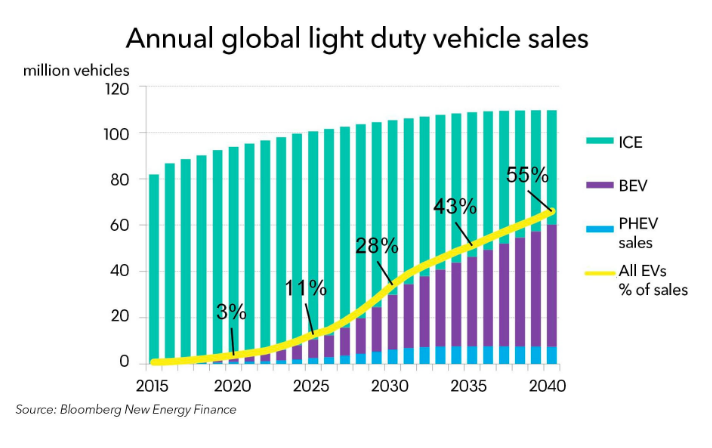The falling cost of batteries is a main driver of increased adoption. BNEF projects that by 2024 the upfront cost of EVs will be competitive on an unsubsidized basis and that by 2030 EVs will be cheaper to make than internal combustion engine cars.
By 2040, BNEF projects that 60 millions EVs will be sold annually, equivalent to 55% of the global light-duty vehicle market (see chart), and that electrified buses and cars will displace a combined 7.3 million barrels per day of transportation fuel.
California is the largest U.S. market for EVs, and the State is moving forward with plans to increase the number of zero-emission vehicles on its roads.
In January 2018, California Governor Edmund G. (Jerry) Brown Jr. ordered "all State entities [to] work with the private sector and all appropriate levels of government to put at least 5 million zero-emission vehicles on California roads by 2030." (Executive Order B-48-18). To achieve this goal will require significant investment in charging infrastructure, a goal supported by an array of programs administered by the State's energy agencies and utilities. Zero-emission vehicles are a key part of California's effort to meet its ambitious goal of reducing greenhouse gas emissions pollution to 40% below 1990 levels by 2030.
Despite California's leadership, BNEF projects that the US will account for only 11% of EV sales in 2030 whereas China will "lead this transition" with sales accounting for almost 50% of the global EV market in 2025 and 39% in 2030.


 RSS Feed
RSS Feed